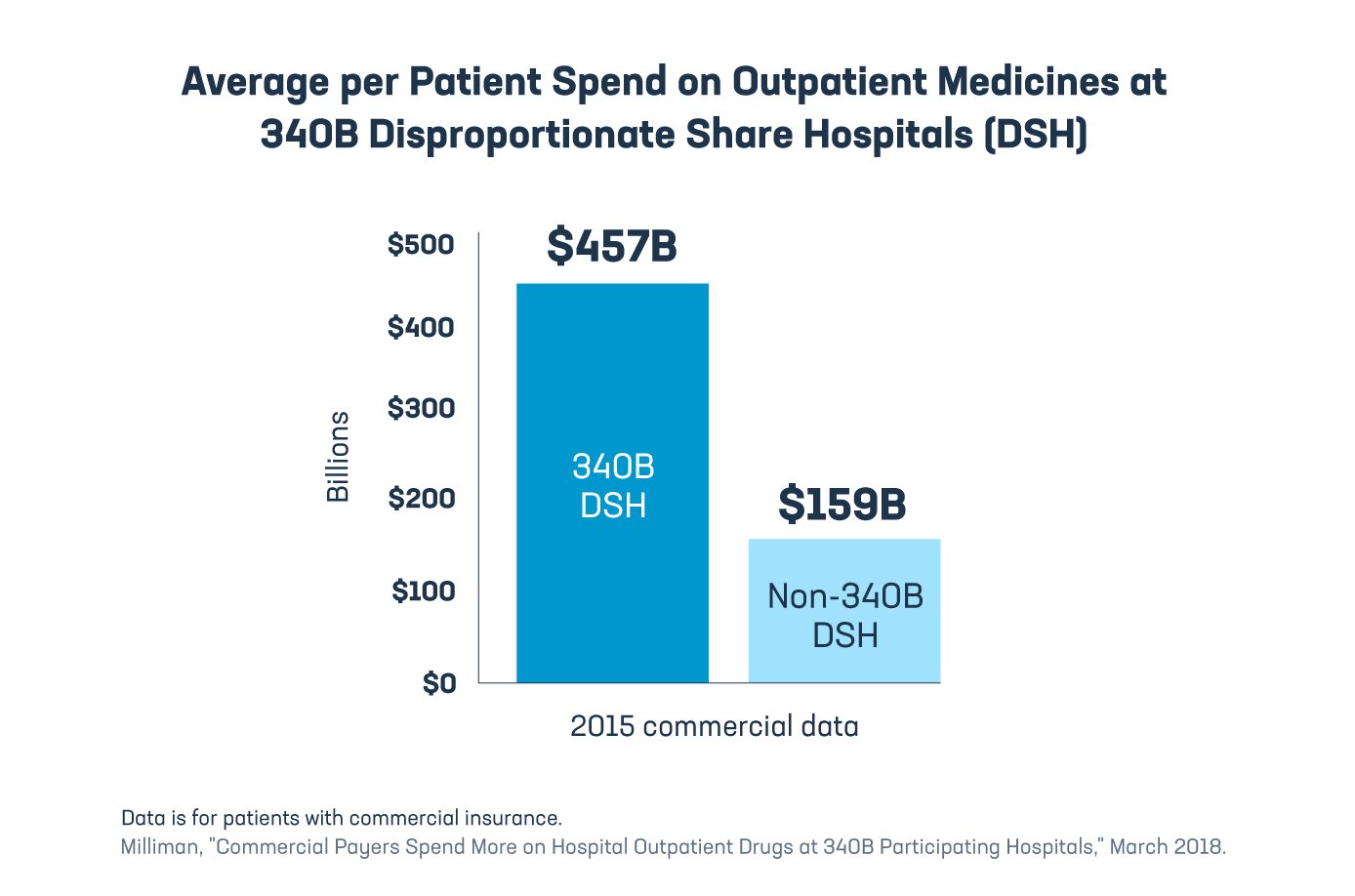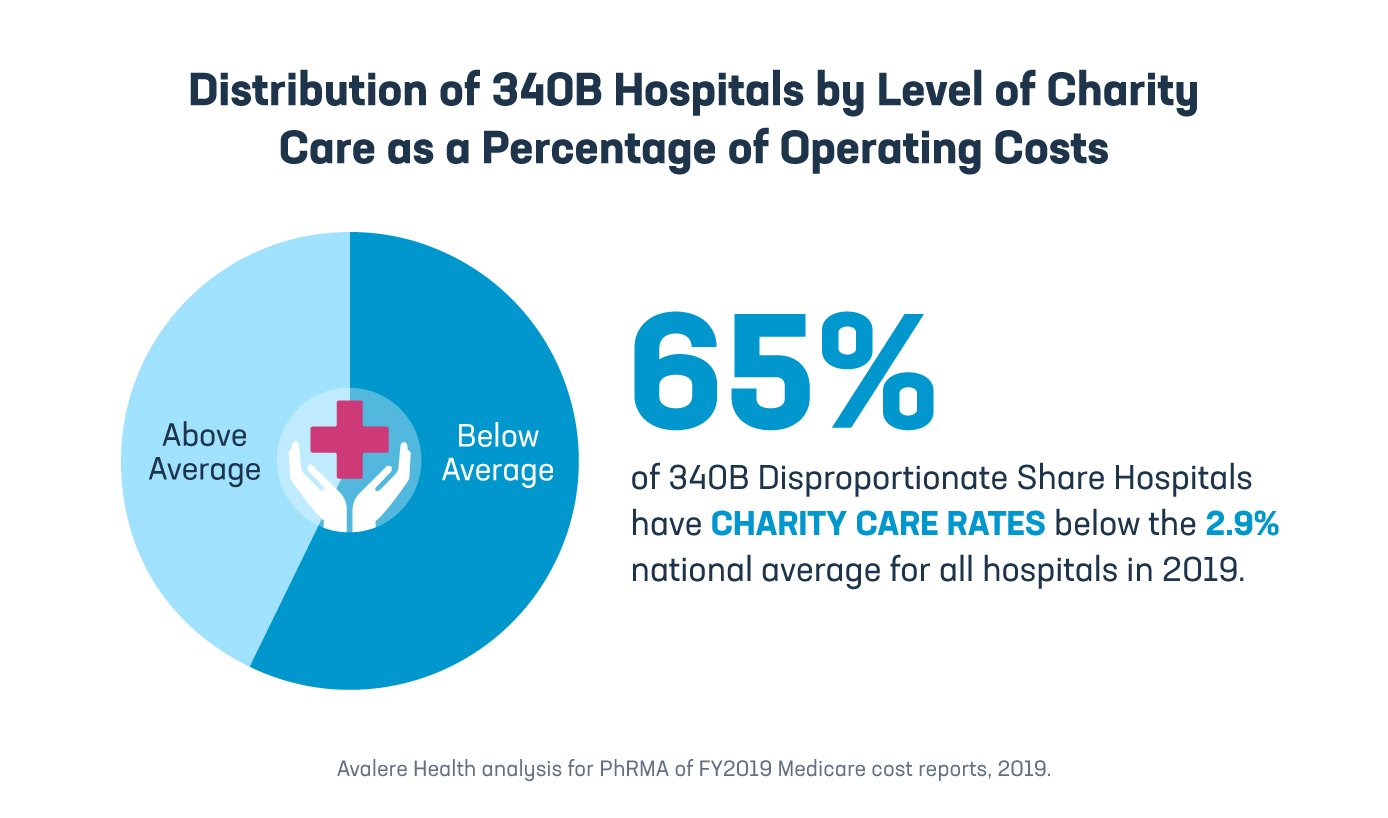The 340B program was created 30 years ago to support safety-net clinics and qualifying hospitals by establishing a discounted medicine program funded by biopharmaceutical manufacturers. The aim was to help vulnerable patients access medicines at these safety-net providers. Unfortunately, the program today has become largely unrecognizable as profit incentives have fueled rapid program expansion, particularly by large hospital systems and often at the expense of patients’ wellbeing. Here are three facts about the 340B program you may not know.
1. 340B has morphed into a program that financially benefits 340B entities and for-profit middlemen, rather than one that puts patients first. The program requires manufacturers to pay qualifying hospitals and clinics deep discounts that average about 59% on outpatient medicines. In some cases, the discounts are so steep they bring the price of a medicine down to just a penny. 340B entities are able to buy outpatient medicines at the 340B discounted rate, charge patients and insurers at a steeply marked-up price, and then pocket the difference. One report found 340B hospitals charged commercial insurers and cash-paying or uninsured patients nearly 3.8 times their acquisition cost (meaning the discounted 340B price) last year. Likely driven by this ability to generate revenue combined with lax federal oversight of the program, sales at the 340B discounted price have grown rapidly, hitting $38 billion in 2020 (27% higher than in 2019). The amount 340B hospitals and their contract pharmacies pocketed from the sale of brand medicines purchased through the 340B program grew by 1,100% between 2013 and 2020.

2. The practices 340B entities employ to increase their profits have the perverse effect of driving up costs for patients. One example is the incentive for 340B hospitals to purchase independent physician offices and then register those practices as 340B sites so they can buy more medicines at the 340B discounted price. This creates a cycle that encourages more and more consolidation and raises prices for patients and the entire health care system because care provided at hospitals tends to be more expensive than care provided at independent practices. Furthermore, the distorted incentives in the 340B program encourage 340B hospitals to prescribe more medicines and more expensive medicines. Evidence suggests profit incentives are leading to higher spending on outpatient medicines at 340B hospitals as compared with non-340B hospitals. Not only does this bring into question if the medicines prescribed are the best match for the patient, but it also means many patients pay more out of pocket – the very patients who are most vulnerable and need the advantages a safety-net provider is supposed to provide.

3. With all of the discounts provided to them, it is absurd that most 340B hospitals provide below-average levels of charity care to vulnerable patients compared to the average for all hospitals. This raises questions about how 340B entities use the money they generate through 340B if they aren’t using it to provide increased charity care. Unfortunately, there are no 340B reporting requirements for hospitals, so there is no way to know how they are using 340B revenue. The program is a black box – with patients, the government and manufacturers left wondering where the tens of billions of dollars in discounts go.

Learn more about the 340B program and ways it could be fixed to better serve vulnerable patients.






